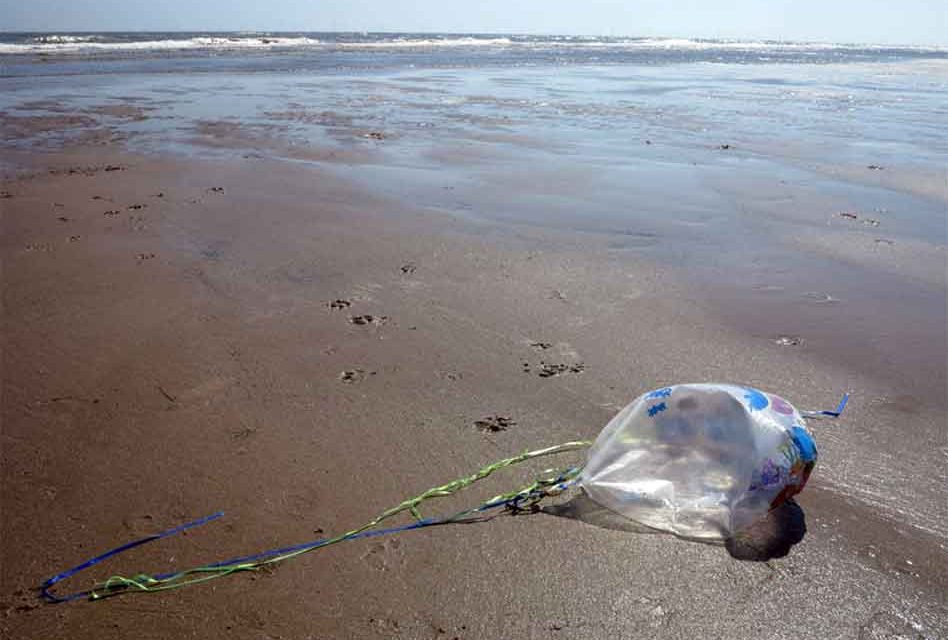Balloons are fun. Kids love ‘em at parties, or just to bat around the room. At some special occasions when used as decorations, and are sometimes intentionally released into the air.
Unfortunately, once they go up, they must also come down; balloons that are released into the air don’t just go away, they either get snagged on something such as tree branches or electrical wires – the shiny metallic balloons have been known to get caught in power conduits and knock out power to whole neighborhoods — deflate and make their way back down, or rise until they pop and fall back to Earth where they can create trash and pollution problems.
According to an NOAA blog, many balloons that are not properly disposed of end up in the ocean and along shores. Once balloons enter the ocean, they can become yet another hazard for marine wildlife. Balloons can be mistaken for food, and if eaten and ingested, balloons and other marine debris can seriously injure or kill marine life. The string or ribbon often attached to balloons can cause entanglement. String can wrap around marine life causing injury, illness, and suffocation.
No one likes to hang out on a beach full of trash. Balloon debris that ends up along shorelines contribute to dirty beaches which deter tourists and residents from enjoying them. Luckily, this and other types of marine debris is completely preventable. There are many decoration alternatives to balloons, such as fabric bunting, lights, paper streamers, plants, and reusable ornaments. If used, balloons should be kept inside with a weight attached to prevent accidental releases. Pop and dispose of balloons, preferably in another bag to reduce landfill impact.
All marine debris comes from people but, according to the NOAA blog, that debris, including balloon debris, and its impact can be reduced or even eliminated through “the 4 Rs” – reduce, reuse, recycle, and refuse.
The moral of the story is: get creative, and celebrate and decorate without balloons.




















